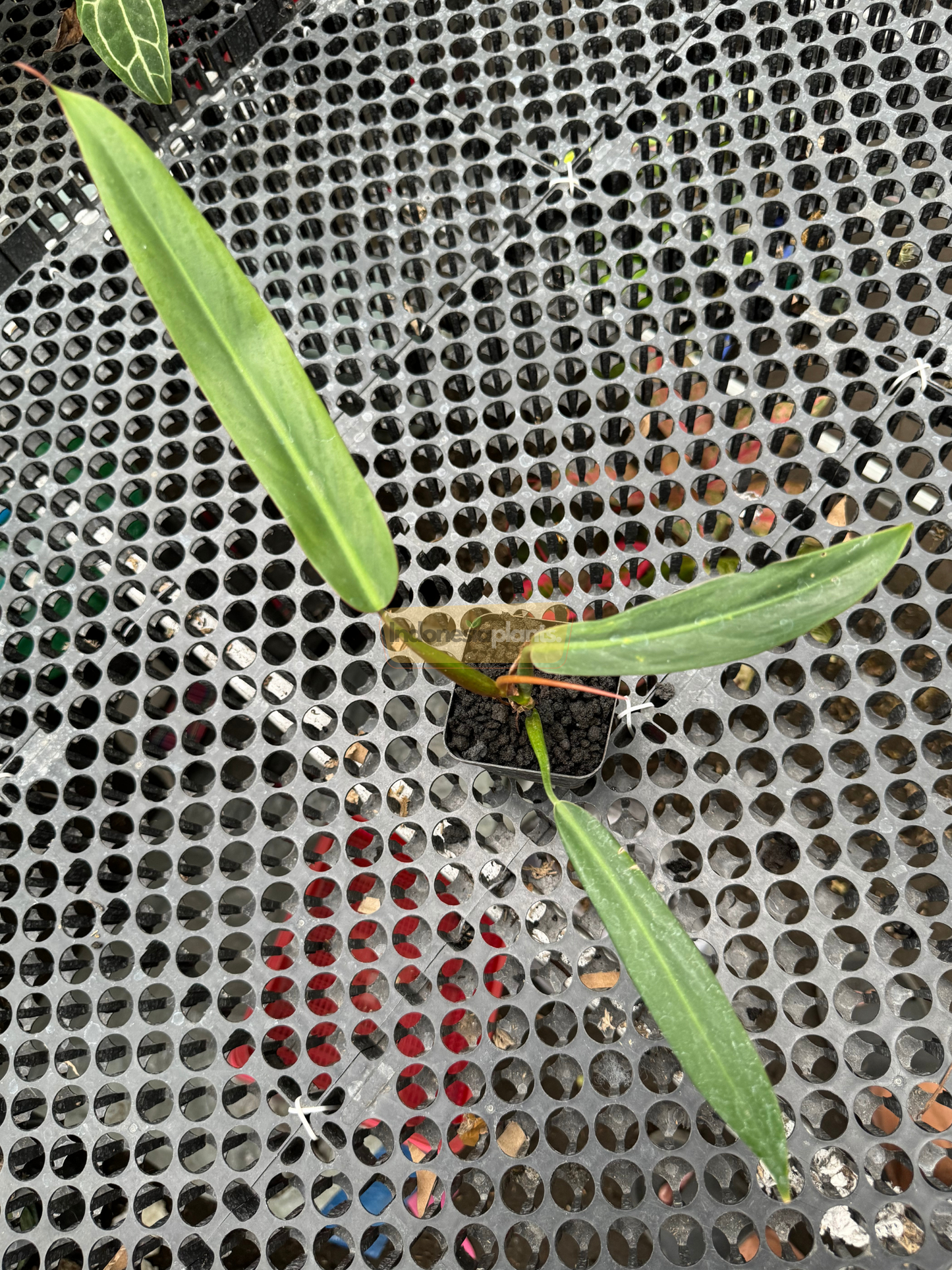indonesiaplants
Philodendron Bicolor Small Size
Philodendron Bicolor Small Size
لم نتمكن من تحميل توفر الاستلام
What You Will Receive:
- A healthy, well-rooted Philodendron Bicolor Small with a minimum of 4 leaves.
- Plant size may vary depending on stock; please refer to product photos for details.
- Carefully packaged to ensure the plant arrives in perfect condition.
Meet the Elegant Contrast: Philodendron Bicolor Small
This stunning Philodendron Bicolor may be small in size, but it brings bold character and vibrant energy to your tropical plant collection. With its elongated leaves that show off a rich contrast between deep green topsides and maroon to burgundy undersides, this species offers a unique dual-tone appeal that plant lovers find irresistible.
✨ Why You'll Love This Tropical Houseplant
- Native to tropical regions and well-suited for indoor environments.
- Easy to care for and beginner-friendly.
- Compact and upright growth — great for shelves, desks, or small spaces.
If You Want This Look → Choose Philodendron bicolor
You’re after a slim, architectural climber with elegant, elongated blades and a composed, modern attitude. Philodendron bicolor delivers a quiet luxe vibe: narrow leaves with a satin-to-semi-gloss surface, clean midrib, and a graceful drape that becomes more upright once it’s guided to a support. Even at a small size, it stages a refined silhouette that’s easy to place—bookshelf corner, slim pedestal, desk-side vignette—without overwhelming the scene.
Compared To Its Cousins
- vs. Philodendron atabapoense: Both read elongated and elegant. Atabapoense often shows a stronger two-tone underside; bicolor feels a touch sleeker and more understated up top, with a tidier, “tailored” blade that stacks neatly as it climbs.
- vs. Philodendron billietiae: Billietiae makes a broad, dramatic arc with long petioles; great for spectacle, trickier in small spaces. Bicolor keeps the footprint compact and the line vertical—perfect when you want height without width.
- vs. broader heart-leaf types: Heart-leaf philodendrons create a fuller, softer mass. Bicolor is for crisp lines and a curated column—less “cottage,” more “gallery.”
- vs. vining non-philodendron options: If you’ve loved trailing species but crave a grown-up, upright look, bicolor converts easily to a column with tighter internodes and a cleaner profile.
Best Use Cases (Small Space Wins)
- Narrow alcoves & shelves: The vertical habit and slim leaves read as intentional design rather than foliage clutter.
- Work setups: A single pole-trained vine creates movement behind a monitor without visual noise.
- Photo corners: The satin surface and defined midrib look great in side light; it’s easy to stage repeatable shots as the plant gains nodes.
Care Delta (What’s Easier/What to Watch)
- Light (easier): Bright, diffused daylight—east exposure or a luminous spot behind sheers. Bicolor rewards consistency more than sheer intensity; steady luminance sharpens margins and keeps internodes tight.
- Water (easier): Water when the top 2–3 cm (≈1 in) of mix dries, then soak and drain fully. It appreciates a calm rhythm, not constant damp.
- Mix (crucial): Oxygen-forward aroid blend—chunky bark + coco fiber/coir + pumice/perlite, plus a modest sphagnum buffer. Air first, then moisture.
- Support (big payoff): A slim moss pole, coco totem, or cedar plank turns a small plant into an elegant column quickly. Soft ties at each node keep the line straight and centered.
- Climate: Comfortable home range works: ~50–70% RH; 18–29 °C (65–85 °F). A mild humidity bump refines leaf finish and eases unfurling.
- Feeding: Light nutrition (¼–½ strength) during active months sustains steady sizing; prioritize light quality over extra fertilizer.
Why It Belongs in Your Mix
Philodendron bicolor is a shape specialist—slender, disciplined, camera-friendly. It brings height to tight footprints, pairs beautifully with velvety or round-leaf companions, and photographs like a pro in side light. Start small, train early, and you’ll watch it evolve from a neat juvenile into a polished column that feels custom-made for modern interiors.
Quick Styling Tips
Neutral planters (stone, sand, charcoal) keep attention on line and texture. Angle side light to carve a subtle highlight along the midrib. Rotate a quarter-turn every two weeks for even development. As with many aroids, keep foliage out of nibbling reach.






